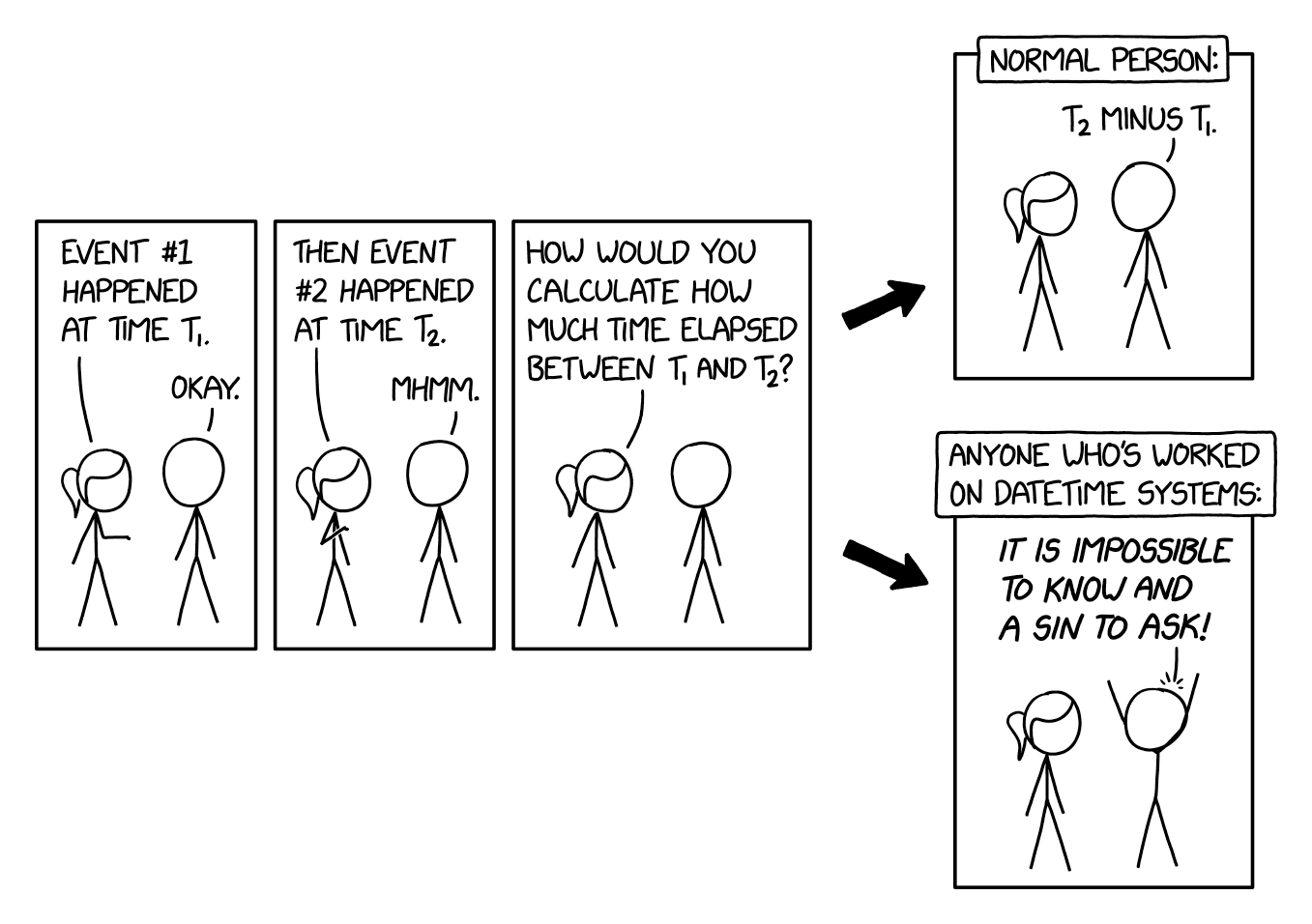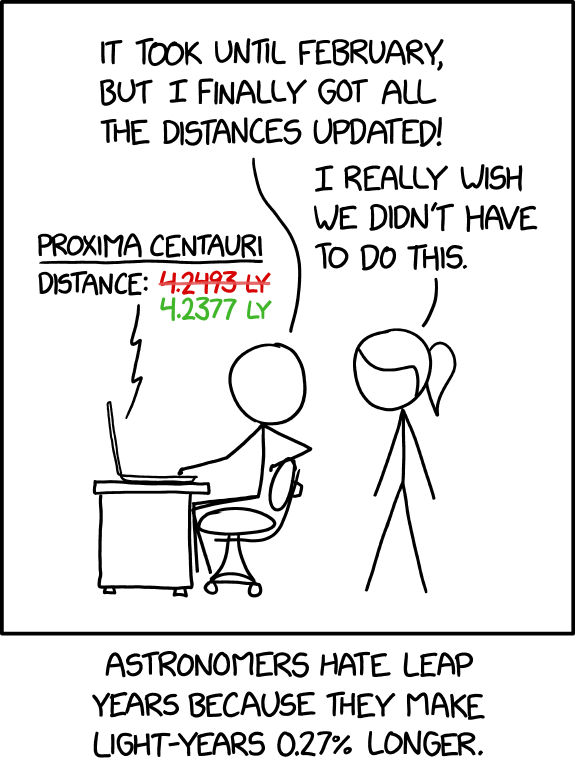Why not redefine lightyears to include a leap year every four years. Except when the number ends on 00, but only if it is not divisible by 400. Physics would be so much easier!
xkcd
A community for a webcomic of romance, sarcasm, math, and language.
Well it's in fact easy to calculate...
To make it easier to visualize we'll start with year 400. From year 400 to year 799 you've got a leap year every 4 years except for years 500, 600, 700 and including year 400, so that's 25 leap years for the first century and 24 for the others.
So you've got 25 + (3x24) = 97 leap years
And 75 + (3 x 76) = 303 non leap years
(97 x 366) + (303 x 365) = 146097 days every 400 years which means a year is 365.2425 days long on average.
365.2425 x 24 = 8765.82 hours on average
8765.82 x 60 x 60 = 31 556 952 seconds per year on average
31 556 952 x 299 792 458 (speed of light per second) = a light year is 9460536207068016 meters long or 9460536207068.016 km long when adjusted to take leap years into consideration.
Alt text lol
there's never been a "Papal starship"^[citation ^needed]
There hasn't been a Papal starship yet. I'm pretty sure he could Christen one, or delegate that authority to the bishop of the moon, an actual thing that technically exists.
Clearly they don't know about Hyperion books
That was my first thought
Hmmm now that I think about this a light year would be (should be) based on an average year, not what we observe in any given year.
365.2425 days. Different searches give different results but that's what I'm going with.
idk, it feels more intuitive for it to be based on the mode (most common) year length (365) instead of the average year length (365.2425).
The boring answer is that in physics a year is just defined as the time it takes for the Earth to orbit the sun, they don't care about calendars and leap years
I would've said 365.25 days?
No, years divisible by 100 aren't leap years, except if they're also divisible by 400.
what is this, some sort of FizzBuzz calendar?

Interestingly, Wikipedia says they actually did base it on 365.25 instead of the actual 365.2425, so you’re technically right.
I don't think that is what Wikipedia says. Whatever one's thoughts on Wikipedia, I'm pretty sure it is getting this right.
365.25 is what you get if you have leap years every four years with no exceptions. This is what was done in the Julian calendar which was used in the Christian world some centuries ago (how long exactly depends on what part of the Christian world).
365.2425 is the average year length in the Gregorian calendar which we use (where leap years are 1592, 1596, 1600, 1604, 1608, ... 1692, 1696, 1704, 1708, ..., 1792, 1796, 1704, 1708, ..., 1892, 1896, 1904, 1908, ... 1992, 1996, 2000, 2004, 2008, ..., 2092, 2096, 2104, 2108, ...).
The actual average solar year is better approximated by the latter than the former, but it is still slightly off.
They skip leap years every now and then. And then skip the skip. Etc. The rotation of the earth around the sun and the spin of the earth on its axis simply don't line up into a nice number.
You'd be imprecise for civil timekeeping, but spot on for astronomy
The civil rule is it's a leap year if the year is divisible by 4, unless it is also divisible by 100 unless it is also divisible by 400
We saw the rules play out in 2000 (at least those of us over 23 saw it) which is a year divisible by 100 and by 400 so it was a leap year
Yours (and astronomy's) is Julian style "if it's divisible by 4"
I prefer the newer calendars, where there is no good mental calculation for leap years - it's a leap year when the computer says it's a leap year
I would think that the best time period to use for a light year is whatever year definition has been used to date
Now let's work on the best second to use for the light second
